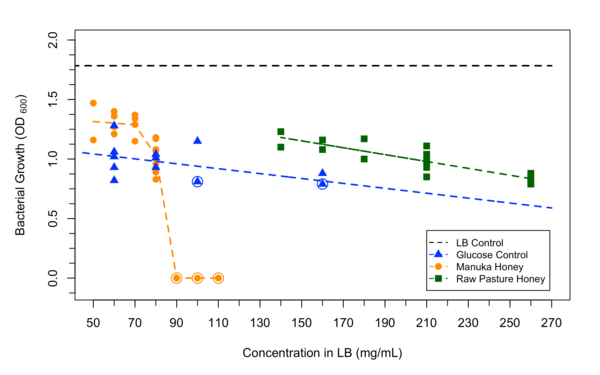Determining the Contribution of Osmotic Stress to the Antibacterial Properties of Honey
(1) Appleton North High School, Appleton, Wisconsin, (2) CRI International Center for Biotechnology, Verona, Wisconsin
https://doi.org/10.59720/18-067
Researchers have repeatedly shown that honey possesses distinctive antimicrobial properties; however, there is uncertainty over which compounds in honey are responsible for these properties. In this research study, we sought to quantify the role of osmotic stress in honey and determine the efficacy of two types of honey: Manuka and raw pasture honey. Bacteria were sequentially cultured in sublethal concentrations of Manuka and raw pasture honey for five days. The role of osmotic stress as a contributor to the antibacterial properties of Manuka and raw pasture honey was quantified in the first culture and over five serial cultures. The growth levels of bacteria in honey were compared to growth levels in glucose, an osmotic control, to quantify the role of osmotic stress in the two types of honey. The results of this study indicate that in the first culture, the antibacterial impacts of Manuka and raw pasture honey were primarily attributable to osmotic stress. However, over five days of sequential transfers, both raw pasture honey and Manuka honey showed significant antibacterial properties beyond osmotic strength. It was established that the antibacterial properties of honey cannot be investigated based solely on the first culture. Serial transfers over several days should be employed to investigate the efficacy of honey as an antibacterial substance.
This article has been tagged with: